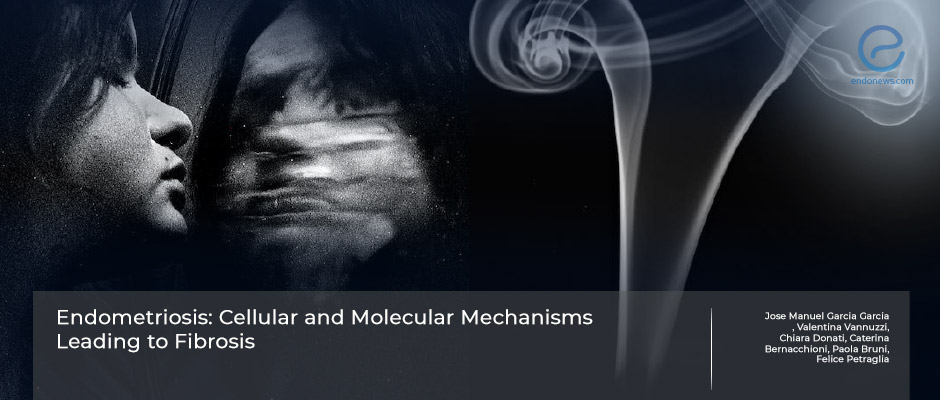Molecular and cellular mechanisms of fibrogenesis in endometriosis
Jan 4, 2023
New drugs can slow down fibrotic changes in endometriosis.
Key Points
Importance:
- The molecular mechanisms responsible for the development of fibrosis in endometriosis are not yet defined.
Highlights:
- To provide a new therapeutic approach and identify new drug targets, information about the molecular mechanism that guides and supports fibrosis in endometriosis is essential.
What's done here:
- This is a review detailing the biological mechanisms and signaling pathways of fibrogenesis of endometriotic lesions.
- The primary aim is to produce relevant information and guidelines to identify new drugs and therapeutic approaches for the patients.
- The differences between deep infiltrating endometriosis and endometriomas are also evaluated.
Outlines:
- Fibrosis occurs inside or around the inflamed tissue with the aim to repair, however, excessive accumulation of components appears in the extracellular matrix.
- The main cell types involved in the development of fibrosis are platelets, myofibroblasts, macrophages, and sensory nerve fibers.
- When the tissue damage is minimal or nonrepetitive, wound healing is efficient; otherwise, continuing extracellular accumulation leads to permanent scarring, architecture disruption, and organ dysfunction.
- Transforming growth factor family (TGBF)-ß members, such as the receptor Notch or bioactive sphingolipid (S1P), play role in the development of fibrosis.
- A new possible drug to block the cellular and molecular pathways of fibrosis in endometriosis would be epigallocatechin-3 gallate (EGCG) which is present in green tea.
- An experimental molecule named PKF-115-584/CGP 049090, a T-cell factor Tcf/ß-catenin complex antagonist may decrease TGF-ß 1 induced fibrotic markers expressions.
- A third choice would be fingolimod, the first FDA-approved Myasthenia Gravis drug that works as a potent but nonselective S1P receptor antagonist to create an immune-modulating effect.
Lay Summary
Endometriosis lesions are characterized by endometrium-like cell proliferation, invasion, and oxidative stress associated with inflammation and neoangiogenesis. Fibrosis, which occurs due to these events, causes chronic pelvic pain depending on the location and the severity of endometriosis.
For the purpose of explaining the mechanism of fibrosis, Garcia et al., from the University of Florance, Italy, wrote a review to explain the cellular and molecular mechanisms responsible for the development of fibrosis in endometriosis. The biological mechanisms and signaling pathways responsible for the fibrogenesis of endometriotic lesions and the possible treatment agents for slowing down or preventing endometriosis-induced fibrogenesis are reviewed.
In this article, two separate pathways of cellular and molecular mechanisms leading to fibrosis are adopted to explain the difference in fibrinogenesis between ovarian endometriosis and deep infiltrating endometriosis. The authors pointed out that endometriosis-related fibrosis occurs more frequently in ovarian endometriomas than in deep infiltrating endometriosis. They also discussed the possible future drugs explaining their role in endometriosis fibrogenesis.
This interesting review was recently published in the journal named "Reproductive Sciences".
Research Source: https://pubmed.ncbi.nlm.nih.gov/36289173/
fibrogenesis molecular mechanism inflammation macrophages platelets myofibroblasts endometriosis TGF-beta

